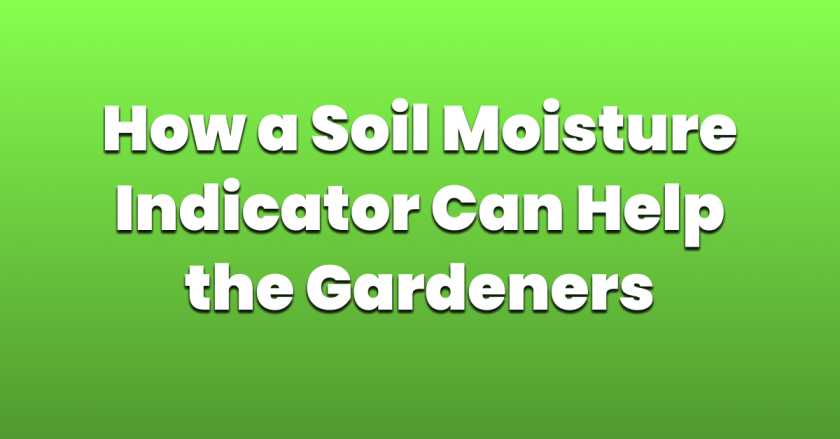A soil moisture indicator is a gadget that allows you to determine the moisture content of your soil. This can be beneficial for both gardeners and farmers because it allows you to water your plants only when they require it. Overwatering and underwatering can both harm plants, so using a soil moisture indicator can help you prevent these issues.
In this article, we will highlight the essential facts about how the soil moisture indicator could help gardeners and farmers.
Types of Soil Moisture Indicators
Tensiometers and electronic meters are two types of soil moisture indicators which are used largely to estimate soil moisture.

Tensiometers
A tensiometer is a soil moisture indicator that detects the tension (suction) of water in the soil. The drier the soil, the greater the tension. Tensiometers are fairly accurate, however they can be challenging to read and interpret. Below are the components of a tensiometer:
- Gauge
The gauge is a pressure gauge that measures the tension of water in the soil. The gauge’s scale will normally be calibrated in centibars (cbars) or kilopascals (kPa).
- Manometer
The manometer is a clear tube that connects to the gauge and porous tip.The manometer shows you the level of water in the tensiometer.
- Porous Tip
The porous tip is a ceramic or nylon tip that is inserted into the soil.The porous tip allows water to enter and exit the tensiometer.As the soil dries, the water in the tensiometer moves into it, causing tension, which the gauge measures.
- Refill Reservoir
The refill reservoir is a small reservoir situated on top of the tensiometer.When the water level in the manometer drops below a specified level, the refill reservoir is used to refill it.
- Air Release Valve
The air release valve is a tiny valve mounted on the tensiometer.The air release valve removes any trapped air bubbles in the tensiometer.
- Stake
The stake is a rod used to place the tensiometer in the soil.The stake is usually composed of metal or plastic.
Electronic meters
Electronic metres employ probes to determine the electrical conductivity of the soil.The soil becomes more wet as its electrical conductivity increases.Electronic metres are simple to use, however they may be less precise than tensiometers.
An electronic soil moisture metre is typically made up of many necessary components:
- Soil Probe
This is the portion that is inserted directly into the soil.It typically comprises of two exposed metal electrodes that conduct electricity in response to the moisture content of the surrounding soil. The drier the soil, the less electricity it conducts.
- Control Unit
This unit houses the meter’s electronic electronics. It translates the signal from the soil probe into a measurement that shows the moisture level. Depending on the metre, this reading may be displayed on an LCD screen, signalling by LEDs, or sent as a digital signal.
- Power Source
Electronic soil moisture metres typically operate on battery power, commonly utilising AA or AAA batteries. Some might come equipped with rechargeable batteries.
- Optional Display Unit
A screen or set of LEDs can be used to visually represent the soil moisture level. Less complex metres might utilise a solitary LED (red for dry, green for moist), whereas more sophisticated metres could feature an LCD screen that shows a numerical value or range of moisture levels.
- Circuit Board (Internal)
This includes the electronic components that interpret the signal from the probe and convert it into a reading. This could involve the use of resistors, capacitors, and a microcontroller, depending on the level of detail of the metre.
Below is a breakdown of each component’s functionality:
- Soil Probe: Conducts electricity according to moisture content.
- Control Unit: Processes the probe’s signal..
- Power Source: Provides electricity to the metre.
- Display Unit (Optional): Displays the moisture level reading.
- Circuit Board (Internal): Performs calculations and converts probe signals into readings.
Conclusion
You may be a confident plant carer with the help of a soil moisture indicator, which eliminates uncertainty in watering.This simple tool has the potential to completely change the way you grow, regardless of your level of experience or desire in getting started.It prevents you from overwatering or underwatering plants by providing accurate moisture level measurements. This helps the plants become healthier and happier. Get rid with the finger test and instead use science! Now that you’ve got a soil moisture sensor, you can start making your yard a true oasis.

